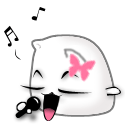School days , school days, good old golden rule days!
No, that's not one of the three songs but it seemed appropriate.
The beginning of the new school year is almost here and it's time for teacher's to jazz up those lesson plans and for parents to get the kids ready for school, especially, the little ones who are just starting school.
I've found three fun songs to help get the little ones excited about school, really.
The first song is really cute and sung to the tune of
Zip-a-dee-doo-dah from Disney's Song of the South. This song is just too cute and a great song to teach your child a few weeks before they start school. You can also change the lyrics a little and continue to use the song throughout the year. You could, for instance, change that second line of the first verse to...."I'm going to school and I'll have a great day!" Nothing like starting the day with a positive thought.
My second song is a classic nursery rhyme/song. Most of us know the song
Mary Had A Little Lamb, but did you know that according to Wikipedia:
The nursery rhyme was first
published (as opposed to
written) by the Boston publishing firm Marsh, Capen & Lyon, as an original poem by
Sarah Josepha Hale on May 24, 1830, and was inspired by an actual incident.
In the 1830s,
Lowell Mason set the nursery rhyme to a melody adding repetition in the verses:
Mary had a little lamb,
little lamb, little lamb,
Mary had a little lamb,
whose fleece was white as snow.
And everywhere that Mary went,
Mary went, Mary went,
and everywhere that Mary went,
the lamb was sure to go.
It followed her to school one day
school one day, school one day,

It followed her to school one day,
which was against the rules.
It made the children laugh and play,
laugh and play, laugh and play,
it made the children laugh and play
to see a lamb at school.
And so the teacher turned it out,
turned it out, turned it out,
And so the teacher turned it out,
but still it lingered near,
And waited patiently about,
patiently about, patiently about,
And waited patiently about
till Mary did appear.
"Why does the lamb love Mary so?"
Love Mary so? Love Mary so?
"Why does the lamb love Mary so,"
the eager children cry.
"Why, Mary loves the lamb, you know."
The lamb, you know, the lamb, you know,
"Why, Mary loves the lamb, you know,"
the teacher did reply.
Follow up activities for Mary Had A Little Lamb:
- Have the kids change the rhyme and put in their name and their own pet or favorite animal.
- Then have the kids think up rhymes for their name and animal.
- Illustrate and write out each child's poem/song.
My third song is
On the Way to School. Unfortunately, I can't show you the tune for the song but you can makeup your own simple tune.
On The Way to School
What a lot of things to see,
On the way to school!
Chipmunks running up a tree,
On the way to school.
Sparrows busy building nests,
Robins smoothing down their vests,
What a lot of things to see,
On the way to school!
What a lot of things to hear,
On the way to school!
Someone whistling loud and clear,
On the way to school.
Workmens' hammers go bang, bang!
Fire engines go clang, clang!
What a lot of things to hear,
On the way to school!
What a lot of things to do,
On the way to school!
Act like monkeys at the zoo,
On the way to school!
Jump in puddles, climb a tree,
Cross the street so carefully,
What a lot of things to do,
On the way to school!
Follow up activity:
Have the kids make up their own verses for this song. Ask them what they see, hear or do on their way to school or what they would like to see. hear or do.....possibly a loaded question.






























